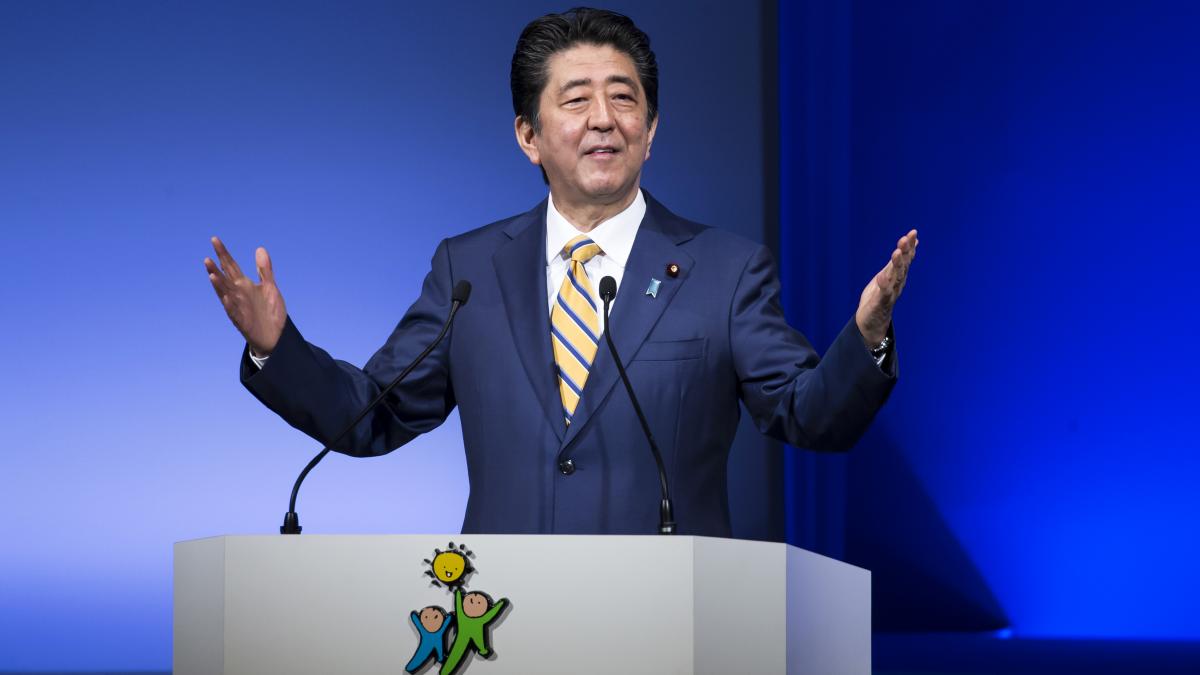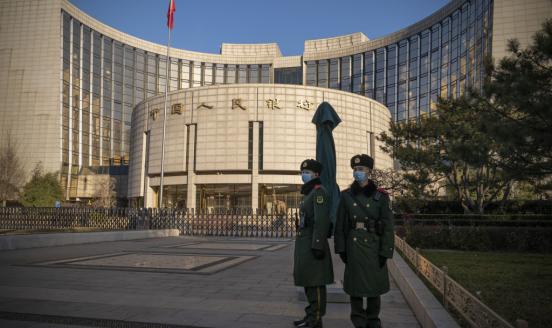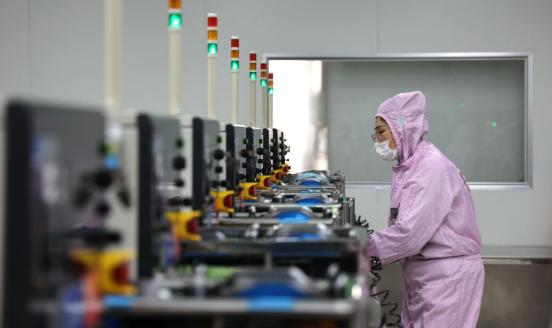Shinzo Abe’s economic legacy: a glass half full
Abenomics has fallen short in many ways, but Japan has still largely coped with an aging society while maintaining a high level of income equality.

This piece was originally published by the Taihe Institute.
The assassination on 8 July 2022 of Japan’s longest-serving prime minister Shinzo Abe was one of the most shocking and saddest events in contemporary Japanese history. Abe had surprised Japanese citizens with his sudden health-related resignation in 2020. His resignation opened the way for Japan’s then foreign minister, Fumio Kishida, to win Liberal Democratic Party (LDP) support and the November 2021 general election, to become prime minister.
One important aspect of Abe’s legacy is his set of economic policies, known as Abenomics. Since Abe’s ascension to power in 2012, Japan’s economic recovery hinged on three so-called ‘arrows’ of monetary policy, fiscal policy and structural reform. This article assesses the progress made by each of the three arrows of Abenomics.
The first and best-known arrow is monetary policy. It relied on massive quantitative easing (QE) as well as the introduction, in February 2016, of negative rates and, by September 2016, of a ceiling on the yield of the 10-year Japanese Government Bond (JGB) – the so-called yield-curve control (YCC). First pioneered by the Bank of Japan, the introduction of YCC was later copied by a number of other central banks. In particular, the Reserve Bank of Australia introduced YCC to keep the cost of funding low after the economy crashed during the COVID-19 pandemic.
However, unlike Japan, the Reserve Bank of Australia quickly moved out of its rushed YCC, choosing to reverse QE both by shrinking its balance sheet and by introducing rate hikes several times in the first half of 2022. The Bank of Japan chose to continue with its ultra-lax YCC policy and purchased huge amounts of JGBs, to the extent that the Bank of Japan now holds the majority of the publicly traded stock. It has also maintained negative short-term interest rates. The latter has become particularly problematic as other major central banks, especially the US Federal Reserve, have tightened monetary policy by hiking rates aggressively. Moreover, the growing negative differential between Japanese and US short-term rates has pushed the yen further towards rapid depreciation, losing some 30% of its value against the dollar and a significant amount against the currencies of other trading partners. Japanese imports have consequently become more expensive, and Japanese households have seen sizable declines in their disposable incomes. The weak yen has increased the negative effects of years of stagnant consumption, partly explained by insignificant wage increases in Japanese households and signalling even more economic difficulties well into the future.
More positively, mitigating deflationary pressures, which is the Bank of Japan’s main focus and a key objective of Abenomics, is finally working. In other words, the global inflationary wave, which is clearly problematic for most of the world, is a blessing for the Bank of Japan, since the surge in energy and food prices has finally brought the consumer price index above the bank’s 2% inflation target (2.4% in June 2022 compared to 0.8% in December 2021). The reality, though, is that deflationary pressures are still present below the surface, as indicated by stubbornly low core inflation, which is still below 1%.
In sum, it is hard to argue that the first arrow of Abenomics has been fully successful, as core inflation remains stubbornly low and the Bank of Japan’s balance sheet has ballooned, which makes an exit strategy from such aggressive use of monetary policy very costly indeed. In fact, Japanese financial institutions, after two decades of meagre rates, have clearly reduced their net interest margins and thereby their profitability. While Japanese institutions should welcome a sudden turn towards positive rates, the exit from such an ultra-lax monetary policy would be very costly for financial institutions whose liabilities need to be repriced at higher rates, and whose assets would be negatively affected during the adjustment period.
Beyond the repricing issue, which mainly affects financial institutions, another important concern is the rapid accumulation of public debt, which relates directly to the second arrow of Abenomics, fiscal policy. This second arrow calls for fiscal policy to be used actively to support the economy, but with an overall objective of fiscal consolidation given the country’s very large public debt, which is among the largest – if not the largest – globally. The cornerstone for the fiscal consolidation objective, which was announced when Abenomics was launched, was a moderate increase in Japan’s consumption tax. However, the increase could only be accomplished through two separate rate hikes, the first in 2014 from 5% to 8% and the second in 2019, from 8% to 10%. By the time both hikes were finalised, Japan’s public debt had increased by 30 percentage points, from 233% of GDP to 263%. The cause of this massive increase was the accumulation of huge fiscal deficits before, but especially during, Prime Minister Abe’s mandate, because of continuously underwhelming economic performance, especially since the start of the COVID-19 pandemic. In fact, in 2020, in response to the pandemic, the Abe administration launched a massive fiscal package of more than 20% of GDP, which further enlarged public debt.
Against a background of rising public debt, fiscal consolidation is a moving target – increasingly hard to achieve. Meanwhile, debt sustainability is an increasing concern for the Japanese economy as the Bank of Japan’s potential debt monetisation will bring about further depreciation of the yen. In other words, few options remain is Japan’s public debt is to enter a sustainable pattern. The best option would be reflation – ie higher growth and higher inflation – but the record for both was disappointing before Abe and during Abenomics. Not only is Japan’s core inflation still below 1%, but GDP growth has remained below 1% on average since Abenomics was launched in 2014. The cause of Japan’s low productivity is a failure to ensure an increase in nominal GDP, which dictates that Japan will require close-to-zero interest rates to serve its public debt. Other options, such as massive cuts to government expenditure, seem improbable given Japan’s rapidly aging population. Significantly the small but painful increase in the sales tax signalled the difficulty of increasing tax pressure on Japanese households without injuring the economy.
The third and final arrow, often seen as the most important, is structural reform. An aging society like Japan needs many types of structural reform. One generally positive aspect is how Japan has managed to contain healthcare expenditure compared to the US and other advanced economies, despite its significantly larger proportion of elderly citizens.
However, the critical structural reform of Japan’s labour market remains unaccomplished. The importance of these reforms stems from Japan’s increasingly low labour productivity, which industrial-level data reveals at barely 0.5%. The loss of industrial capacity over previous decades, as Japanese companies preferred to invest in countries with lower labour costs, is another key factor underlying Japan’s low productivity. Japan was unable to create enough high-paying jobs in the service sector as job creation primarily occurred in restaurants and convenience stores.
A key reason for this trend lies in Japan’s dual labour market, which provides lifetime employment on one side and precarious part-time or short-term work, done largely by young people and women, on the other. Successful labour market reform would remove some of the rigidities in the full-time labour market and reduce the role of part-time/low-productivity jobs. This is essential but faces intense opposition from incumbents, who are a substantial share of the Japanese population. Another vital challenge Japan faces is the increasingly large part of government expenditure dedicated to the elderly. Because of this, public expenditure on research and development, which has long been a critical feature of Japan’s economic success, has been decreasing, and the share of fiscal expenditure going to health and pensions has been increasing. Finally, corporate Japan faces governance challenges for which reform is sorely needed. The focus on research and development, and improving corporate governance and enhancing entrepreneurship, are key factors behind any country’s increase in total factor productivity, which underpins economic growth.
Overall, it is difficult to predict how Japan could undertake in-depth reforms if it has taken five years to increase the consumption tax by only five percentage points, aided by two strong fiscal stimulus packages. For Japan to achieve significant labour-market reform, the amount of fiscal anaesthesia would exceed government means, given the already huge stock of accumulated public debt. Thus, at best, Abe’s economic legacy can be assessed as delivering only mixed results. The first arrow, exceedingly lax monetary policy, has failed to achieve its stated inflation objective, at least in terms of core inflation. The second arrow of fiscal consolidation has not been realised, nor have large increases in fiscal expenditure catalysed economic growth. Finally, structural reforms have been scarce, especially in relation to the labour market.
Nevertheless, Abe’s economic legacy can still be considered a half-full glass and not an empty one. For a country that is already facing the challenges many others will soon be confronting, Japan has performed reasonably well. Given its rapid aging and the related structural challenges, Japan has managed to maintain a high standard of living and a more equal income distribution than most countries. In other words, Japan has managed to age gracefully while keeping harmony in its society. This is an economic and societal success that should be recognised as partly down to Abe.



